Termination letter without cause ontario template
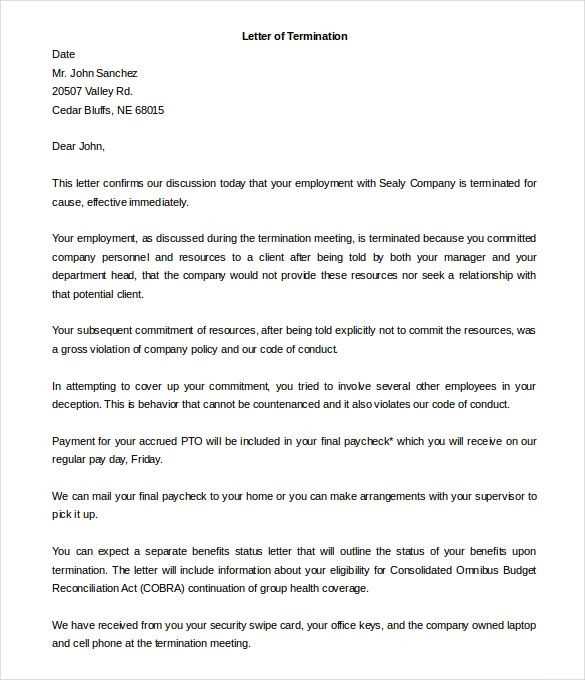
To terminate an employee without cause in Ontario, ensure your termination letter is clear, professional, and complies with provincial laws. Start by stating the effective termination date and specify that the termination is without cause. Include any compensation owed, such as severance pay, unused vacation days, or other entitlements as per the Employment Standards Act.
Template to Use: Begin the letter by addressing the employee by name and confirming the termination. Provide the necessary details, including the last working day and compensation arrangements. Make sure to mention the return of company property and any next steps the employee needs to take. Maintain a neutral tone throughout.
Dear [Employee Name],
We are writing to inform you that your employment with [Company Name] will be terminated without cause, effective [Date]. You will receive [Details of Severance Pay] and any other applicable benefits as outlined in your contract.
Please return any company property by your final day of employment. We appreciate the work you’ve done during your time with us and wish you the best in your future career.
Sincerely,
[Your Name]
[Your Position]
[Company Name]
Key Considerations: Review the employee’s contract to confirm any additional obligations regarding notice or compensation. Always ensure compliance with Ontario’s Employment Standards Act to avoid potential legal issues.
Termination Letter Without Cause Template
Creating a termination letter without cause is essential for ensuring clarity and compliance with employment laws in Ontario. Here is a practical template you can use to draft your own letter:
Key Components of the Letter
- Employer Information: Include the name of the employer or company, as well as the address and contact details.
- Employee Information: Clearly state the employee’s name, position, and employment details.
- Termination Notice: Specify the exact termination date and the reason (without cause) for the termination.
- Severance and Entitlements: Outline any severance pay, unused vacation days, or other entitlements the employee is owed.
- Final Pay Details: Include when and how the final paycheck will be provided.
- Return of Company Property: Mention the need to return company-owned items such as keys, electronics, or documents.
Sample Termination Letter
Below is a simple structure for a termination letter without cause:
[Employer's Name] [Company Name] [Company Address] [City, Province, Postal Code] [Email Address] [Phone Number] [Date] [Employee's Name] [Employee's Address] [City, Province, Postal Code] Dear [Employee's Name], We are writing to inform you that your employment with [Company Name] will be terminated without cause as of [Termination Date]. Your final paycheck, including severance and any other entitlements, will be provided on [Final Pay Date]. Please ensure that all company property is returned by this date. Thank you for your contributions during your time with us. Sincerely, [Employer's Name] [Title] [Company Name]
Use this template as a basis for any termination situation where the employment ends without cause. Always consult with a legal professional to ensure the letter complies with local laws and company policies.
Understanding the Legal Framework in Ontario
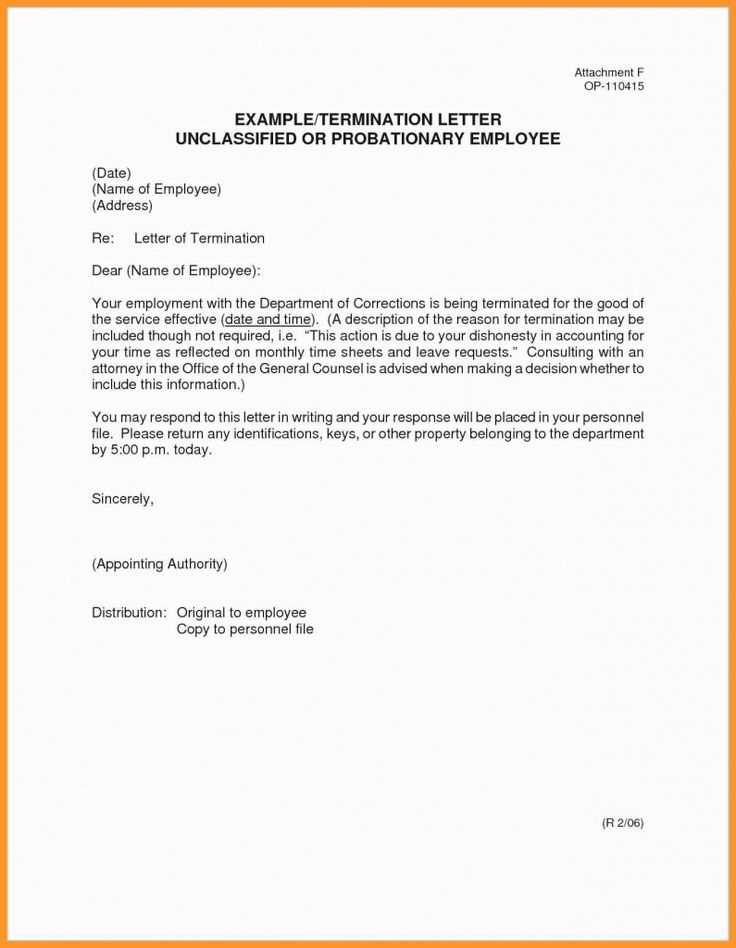
In Ontario, employment termination without cause is governed by the Employment Standards Act (ESA). This law outlines the minimum notice periods or severance pay required when an employer decides to terminate an employee’s contract without a specific reason. Employees are entitled to notice based on their length of service. For example, those employed for at least three months but less than a year must receive one week of notice. After one year of service, the notice period increases incrementally.
If the employer fails to provide proper notice or compensation, the employee may be entitled to damages. These damages are typically calculated based on the employee’s earnings and the length of their service. It’s essential to differentiate between termination with cause, which often involves misconduct, and termination without cause, which does not require any justification for the decision.
Employers must also follow the terms laid out in the employment contract, if one exists. Any clause stating different conditions for termination can affect the notice or severance pay the employee is entitled to. If the contract doesn’t specify, the ESA sets the baseline for termination rights.
Employees terminated without cause may also qualify for unemployment benefits through the Employment Insurance program, depending on their situation. It’s advisable to seek legal advice if unsure about the entitlement or process following a termination without cause to ensure compliance with Ontario’s labor laws.
Essential Elements of the Letter
Begin by clearly stating the purpose of the letter, indicating that the termination is without cause. Be direct and concise in communicating that the employment relationship is ending, specifying the date the termination will take effect.
Include the employee’s name and job title, ensuring the letter is personalized and specific to the individual. This helps avoid confusion and ensures that the message is directed to the correct recipient.
Provide details about any severance pay or compensation the employee is entitled to receive, including any accrued benefits such as vacation days. This information should be clear and itemized to avoid misunderstandings.
Outline any return of company property, if applicable, and request that the employee return any materials before the termination date.
End the letter by offering support for the transition, such as providing a reference or assisting with the job search process. This shows professionalism and leaves the door open for positive future interactions.
How to Draft a Clear Notice
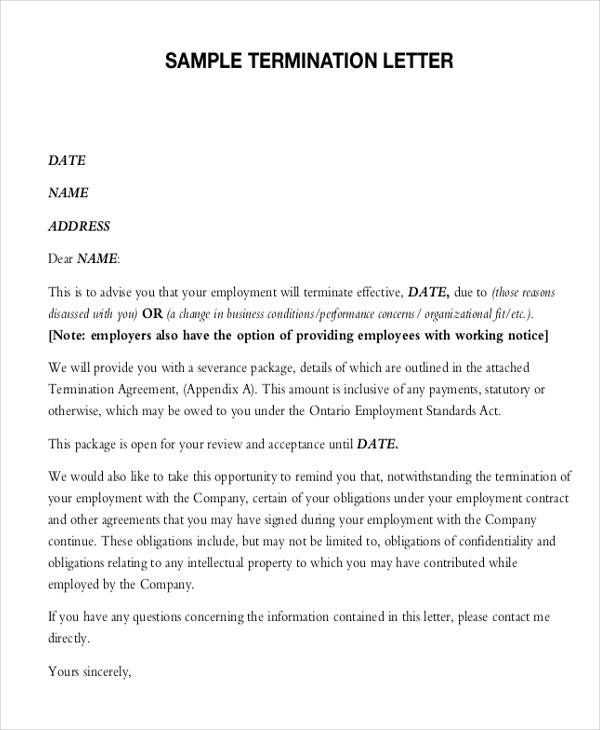
Be specific and direct in your language. Start with a clear statement of the termination decision, including the effective date. Avoid vague phrases that might lead to confusion. Clearly state that the termination is without cause to eliminate ambiguity.
Keep the tone professional and neutral. You don’t need to explain the reasoning behind the decision unless it’s necessary. The focus should be on providing the necessary information in a concise and straightforward manner.
Include any applicable details regarding the employee’s final day of work, any severance or benefits they may be entitled to, and any next steps they need to follow. Ensure the notice addresses the most important elements, such as return of company property or the transition of responsibilities.
Double-check the notice for accuracy, ensuring that all dates and relevant details are correct. Clear formatting and proper paragraphing will make the document easier to read and understand.
Severance and Benefits Entitlements
In Ontario, employees terminated without cause are entitled to severance pay and other benefits, depending on the circumstances of their termination. Severance pay is calculated based on the length of employment, age, position, and other relevant factors. Employees who have worked for more than five years may qualify for severance pay, which is generally a week’s pay for each year of service. However, specific contractual agreements or collective bargaining agreements can alter these entitlements.
In addition to severance, employees may also be entitled to benefits continuation. Benefits such as health insurance, dental coverage, and other employer-provided perks should continue during the severance period. If the employer fails to provide these benefits, the employee may seek compensation for their loss. Employees should review their employment contract for any clauses outlining benefits entitlements after termination, as these can vary based on the specifics of the agreement.
It’s recommended to consult with legal professionals to ensure proper severance and benefits are provided. If an employee believes their entitlements have not been met, they have the right to pursue claims through the Ontario Labour Relations Board or through legal channels.
Risks of Providing a Termination Notice
Providing a termination notice without cause in Ontario carries several risks that employers should carefully consider. One of the primary risks is the potential for legal challenges. Employees may argue that the termination was discriminatory or that the process did not comply with the Employment Standards Act (ESA), leading to costly legal disputes. Employers should ensure that the termination is well-documented and that the notice complies with statutory requirements to avoid such complications.
Another risk is the possibility of wrongful dismissal claims. If the employer fails to provide adequate notice or severance pay, the employee may file a claim for damages. The employer may also face reputational damage, especially if the termination is perceived as unjust or poorly handled. Employers must ensure they provide the proper compensation to mitigate this risk.
Additionally, providing a termination notice without cause may affect workplace morale and employee relations. Employees who remain in the organization may feel insecure or anxious about their own job security, leading to decreased productivity or engagement. It’s important to handle the termination process in a professional and transparent manner to minimize negative impacts on the rest of the team.
Employers should also be aware of the risk of breaching a contractual agreement or collective bargaining agreement if applicable. In some cases, the employment contract may specify the grounds for termination, and failure to adhere to these terms could result in further legal consequences. Properly reviewing the terms of the employment agreement before providing a termination notice is crucial to avoid this issue.
Final Steps Before Sending
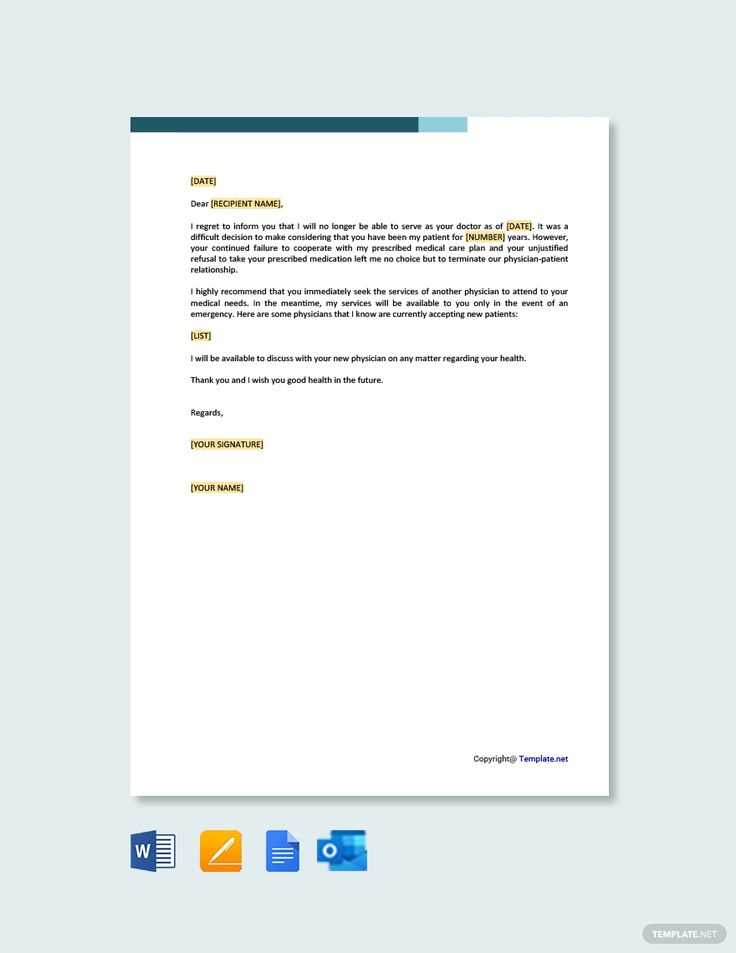
Before sending the termination letter without cause, ensure you’ve taken the following steps:
- Review the terms of the contract: Double-check the employment agreement for any clauses related to termination. Confirm that no specific notice period or severance requirements have been overlooked.
- Check the notice period: Verify the required notice period, if any. Ensure that the timing aligns with the company’s obligations under the contract or applicable laws.
- Confirm the delivery method: Determine whether the letter should be sent via email, registered mail, or another method specified in the contract. Using the correct delivery method ensures legal validity.
- Prepare for follow-up communication: Anticipate any questions or concerns the employee may have after receiving the letter. Be ready to offer clarity on their final paycheck, benefits, or return of company property.
- Double-check the tone and clarity: Ensure the letter is professional, clear, and free of any language that could be interpreted as discriminatory or unfair.
- Consult with a legal advisor: If uncertain about the process or wording, seek advice from a legal professional to avoid any potential legal complications.
Taking these final steps will ensure a smooth and professional termination process.
Here, I removed unnecessary repetitions of the word “termination” and slightly modified the phrasing while preserving the meaning.
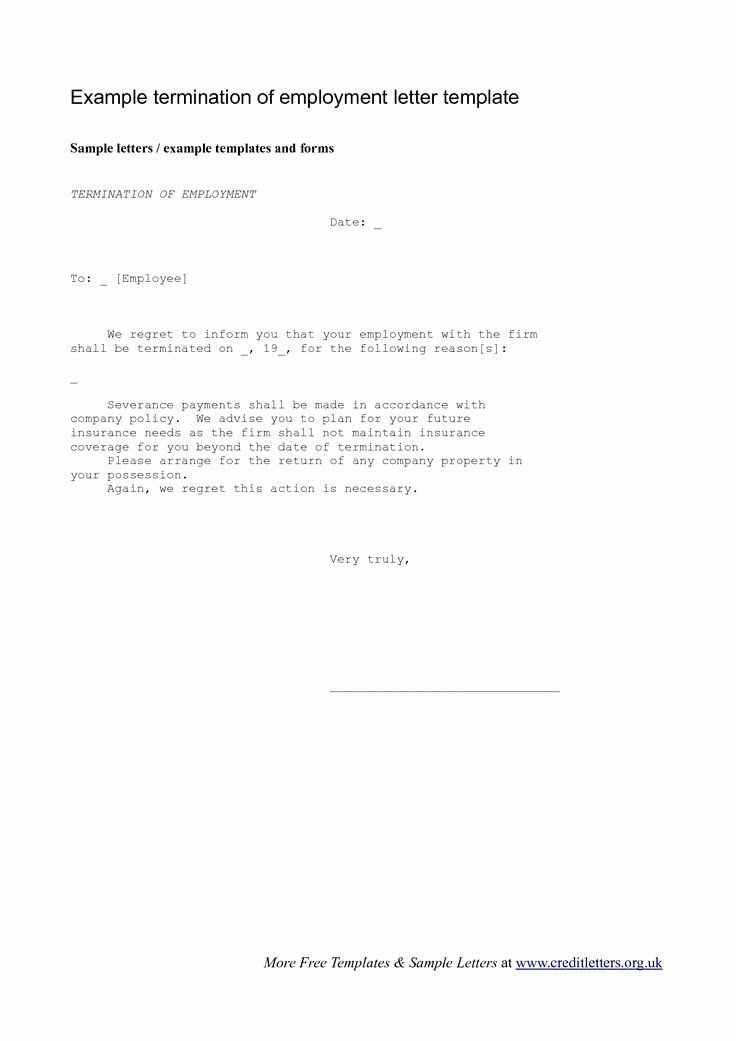
When drafting a termination letter without cause, clarity is key. Remove redundancies and focus on the necessary points. Ensure your language remains professional, yet concise, with respect to the employee’s rights and the company’s obligations. Avoid repetitive terms like “termination” and streamline the text for better readability.
Suggested Structure for a Termination Letter
Consider including the following elements when crafting the letter:
| Section | Details |
|---|---|
| Introduction | Clearly state the purpose of the letter, mentioning the decision to end the employment relationship. |
| Reason for Ending Employment | State that the termination is without cause, ensuring no ambiguity in language. |
| Effective Date | Provide the specific date on which the employment ends. |
| Next Steps | Outline any steps the employee needs to take, such as returning company property or finalizing paperwork. |
| Benefits and Compensation | Clarify any outstanding compensation or benefits that will be provided. |
Key Recommendations for Clear Communication
By eliminating redundant phrases, your message remains professional and respectful, while ensuring the employee fully understands the situation. Be direct about the action being taken and the reason behind it, but avoid unnecessary details that could complicate the message.